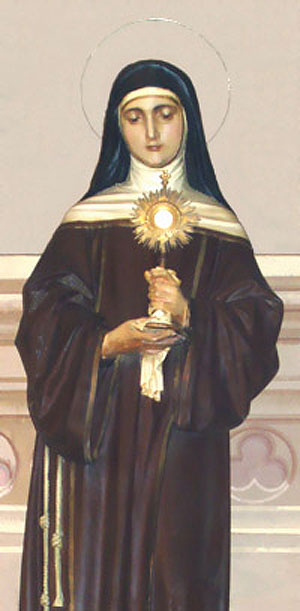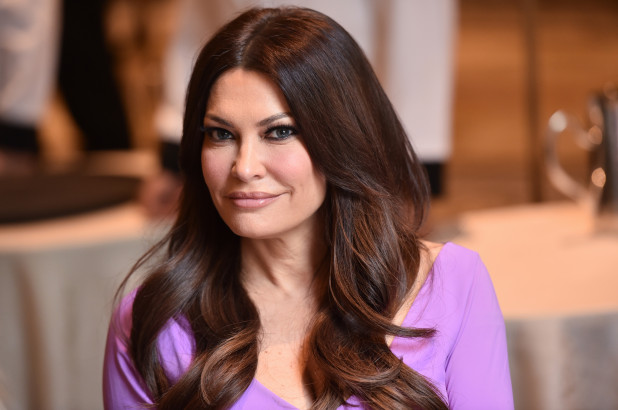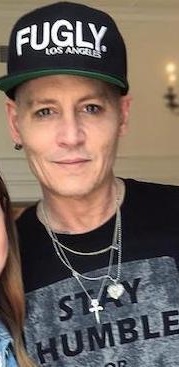 PICTURED: Saint-Claire-Ayizan, an example of a Voodoo Lwa or Loa. She is believed to be spiritually present only at Voodoo initiation rituals and rarely makes herself available for anything else. She is rather aloof. Good for her.
PICTURED: Saint-Claire-Ayizan, an example of a Voodoo Lwa or Loa. She is believed to be spiritually present only at Voodoo initiation rituals and rarely makes herself available for anything else. She is rather aloof. Good for her.
You know what gets a bad rap? Haitian Voodoo — and that’s not fair.
Voodoo, in it’s true form, is a complex combo of Roman Catholic and ancient African tribal beliefs. It is an interesting religion and a rather sensible one too.
Voodoo priests and practitioners are often depicted in white, western culture as evil zombie makers with pins and potions. This is vastly untrue and only a small percentage of Voodoo practice ventures into that realm. The recent tragic events in Haiti should have enlightened everyone to the wonders of this interesting and often mesmerizing faith. rather than cast it in a bad light.
Their good intentions notwithstanding, a lot of Christian do-gooders rushed to shaken Haiti with Bible in hand, when in fact they should have gone there with a better knowledge of Voodoo and the importance of its rituals in the daily lives of many Haitian people.
But, I can’t knock anyone who goes anywhere to help, and the vast majority of helpers did just that — help. In some cases the cost for this help might possibly be attempts at fundamentalist conversion, but we’ll see what happens when the dust clears.
Haitians find great comfort in their Voodoo beliefs, and the Roman Catholic influence that looms largely over Haitians in general has resisted the relentless attempts of Protestant missionaries to convert them to other, less ritualistic, varieties of Christianity. Haitians are perhaps the most devout Catholics the Vatican has right now, and the tribal beliefs attached to Voodoo are so ancient that their roots are far too deep for any outsiders to unearth. This is what one would call “True Faith.”
Of course it’s chic for scatter-brained westerners to call themselves Buddhists or Wiccans or something else about which they have no knowledge. If I hear another white guy from NYC call himself a Buddhist, I’ll puke.
Thankfully Voodoo is not yet considered to be cocktail-party-cool — unless you’re one of those mindless Goths, or misfits, or a dopey pothead in a Che Guevara T-shirt who has zero concept of anything let alone the most basic tenets of Voodoo.
Since the clean-up in Haiti is going to take a long time, perhaps it would be good to learn a bit about voodoo in it’s most basic form.
In real voodoo, not the weird kind with pins and dolls, they believe in a God called Bondye (Bon-dee-HAY’). Bondye runs the universe but he does so with a bit of disdain. He pays no attention to humans; preferring instead to let his subordinates help humans for whatever reason and intercede on his behalf. These subordinates are called Lwa (Low-WAH’) or Loa, and a large portion of Voodoo consists of prayers dedicated to these Lwa.
Forbidden by their masters to practice their tribal faiths when brought to the New World, slaves in Haiti, parts of Louisiana and elsewhere in the Caribbean eventually substituted or enhanced the Lwa with Catholic Saints and angels. The Saints and Lwa work hand in glove to comfort or assist humanity and there are many Catholic saints who are themselves a Lwa. After centuries of complex mixing of two faiths, the religion of Voodoo was born. While it was mostly frowned upon by whites in the 18th and 19th centuries, the strong Catholic aspects attached to Voodoo rendered it tolerable to some level. What may have started out as a sneaky way to practice tribal rituals without raising the hackles of the staunch French Catholics, evolved into what is now called Voodoo.
Because Bondye, the supreme God is unreachable and above human trials and tribulations, Vodouisants (people who practice Voodoo) aim their prayers to the Lwa or mistè. Noteable Lwa are Papa Legba(guardian of the crossroads), Erzulie Freda (the spirit of love), Simbi (the spirit of rain and magicians), Kouzin Zaka (the spirit of agriculture), and The Marasa, divine twins who are considered to be the first children of Bondye.
The Lwa are also divided into 21 nations, and they also fall into family groups, who share a surname, such as Ogou, Ezili, Azakaor Ghede. For instance, “Ezili” is a family, Ezili Danto and Ezili Fredaare two individual spirits in that family. Each family is associated with a specific aspect. For instance, the Ogou family are soldiers, the Ezili govern the feminine spheres of life, the Azaka govern agriculture, the Ghedegovern the sphere of death and fertility.
Most importantly, each of the Lwa is associated with a particular Roman Catholic saint and the power of each saint is an important tool in the day-to-day workings of the Lwa and to all Vodouisants.
So that is your brief lesson in Voodoo. It’s actually very interesting and intricate. Somehow Voodoo culture holds together the tattered fibers of a nation that is essentially a sad and forlorn island of ruined finery. Such is the strength of this often misunderstood, but highly sophisticated religious practice.


